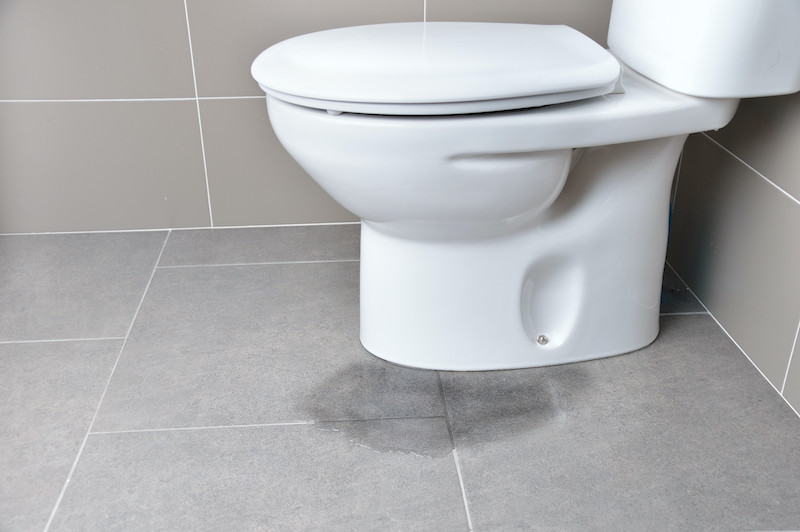Toilet floods are a huge inconvenience. When you flush your commode, the expectation is that the water will easily go down with no issues. However, that’s not always the case.
When you see the water slowly inching up towards the brim, the first thought is the panic— but don’t do it. You can control a flooded toilet with a few simple steps.
To learn more about what to do when your toilet overflows, check out the information below.
What to Do When Your Toilet Overflows
When your toilet floods, you must move fast. Here are the steps to take:
Stop the Water Flow
When your toilet is overflowing, the first course of action is to stop the water flow. Most toilets have a water line that connects from the wall to the toilet, and it contains a hand-crank valve on the line.
If you turn the valve in the proper direction, you’ll hear the water stop running. This will ensure that water doesn’t continue to rise and prevent it from spilling over the brim. If you don’t see the water line and valve, it could be because it’s installed behind the wall.
You can talk to a plumbing professional about ways to make modifications so that you can have access to the valve in the future.
Fix the Inside of the Toilet
If you can’t reach the water line or you’re having trouble turning the water off, the next option is to work inside of the commode. Remove the lid from the top of the toilet and set aside. Make sure you put on a pair of rubber gloves to protect your hands before doing this step.
The first instrument you should look for is the flapper. It’s a rubber disc that covers the opening at the bottom of the tank. If the flapper is open, stick your hand in and close it manually.
If the flapper isn’t open or it won’t stay shut, locate the float ball. It’s the instrument that floats on the surface of the water and stops the tank from filling up to a certain level. If you pull the float ball to the top of the tank, the water will turn off.
Use a Plunger
Once the water has stopped, use a plunger to push the water back into the opening of the toilet bowl. To ensure that the water goes down properly, place the rubber portion of the plunger directly over the opening.
Once you feel the suction of the plunger gripping the commode, apply pressure in a steady downward motion to move the water into the pipes.
Reasons Why Your Toilet Is Overflowing
If your toilet keeps overflowing, it could be because of a bigger issue. In that case, it’s a good idea to call a plumber to fix the problem. Below are the most common reasons for a flooded toilet:
Clogged Pipes
A clog in your commode or the nearby pipes prevents water from draining when you flush. The most common reason for this type of blockage is using too much toilet tissue.
If you have an older commode, they usually clog easily and you may have to flush more than once. In this situation, make sure that you have a plunger on hand to take care of frequent overflows.
Blocked Vents
A plumbing vent is a vertical pipe at links to all of your home’s plumbing fixtures. It allows air into the pipes to replace the air that goes down the drain when you flush your commode. The vent generally has an outlet that connects to the roof.
Unfortunately, if it gets clogged with debris such as leaves and dirt, it’ll eventually stop draining. It could also lead to bad odors or bubbling sounds that occur after you flush the toilet.
Not to mention, it might cause suction that can damage your pipes. If you have this issue with a bad vent, it’s best to contact a plumbing professional who can help.
A Full Septic Tank
If your home operates off of a septic tank rather than a municipal sewer system, that could be the culprit for an overflowing toilet. Septic tanks store waste and release the remainder of the water into the surrounding soil, which is known as the drain field.
If your septic tank is full or if the water can’t release for some reason, your commode will overflow. To prevent this, schedule routine maintenance for your septic tank and your other plumbing needs. That way, it ensures there are no issues.
Sewage Problems
The pipes that connect from your home to the main sewer line can become clogged by tree roots and other natural elements. When items like wet wipes or paper towels are flushed down the toilet, it creates a clog over time.
When that happens, the sewer line can create major floods in the toilets and in the basement as well. If the sewage can’t drain, it’ll travel back up into your plumbing line and enter the lowest points of your home. The bottom level is usually the basement toilet.
However, if you’ve turned off your home’s water and your toilets are still overflowing, it’s probably an issue with the city sewer line.
How to Stop an Overflowing Toilet
Now that you know what to do when your toilet overflows, you can rest easy. But if you’re experiencing frequent toilet floods, that’s a sign of a bigger issue. If that’s the case, Arch Plumbing can help.
We service the St. Charles and Greater St. Louis area, so call us if you need us. We can be reached at 636-299-3854 or you can contact us online.
We’re more than happy to assist you!


Recent Comments